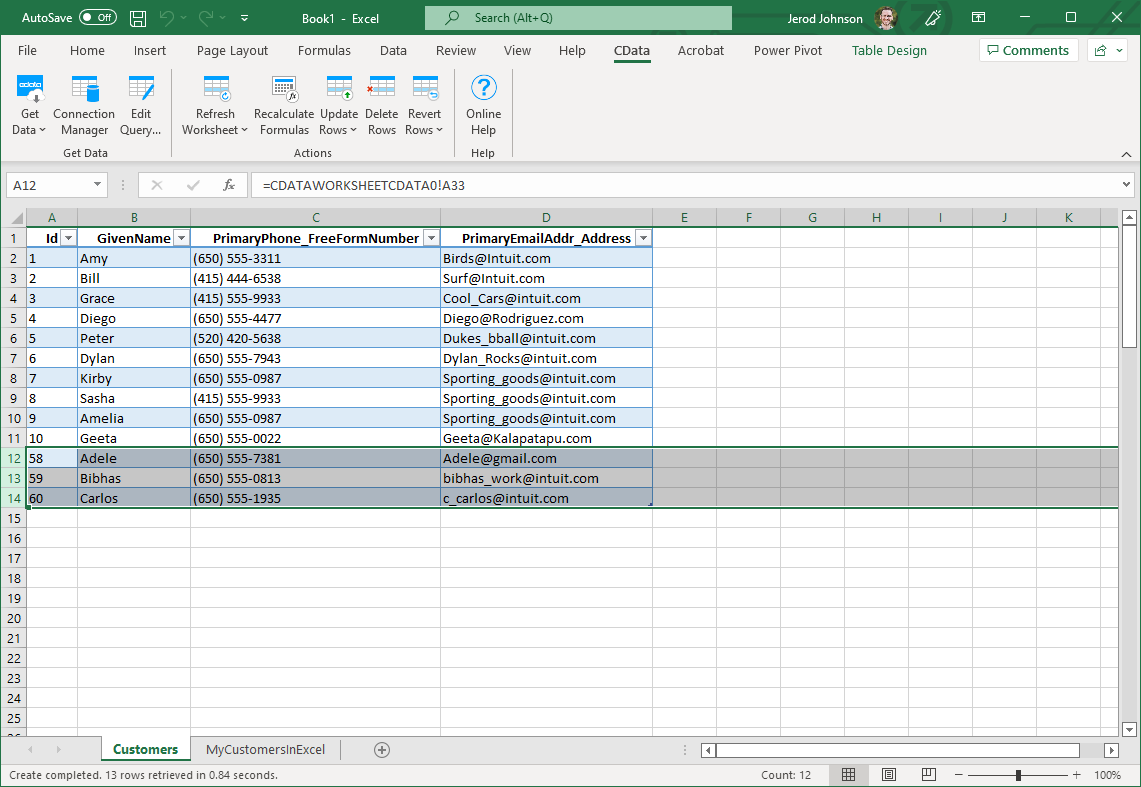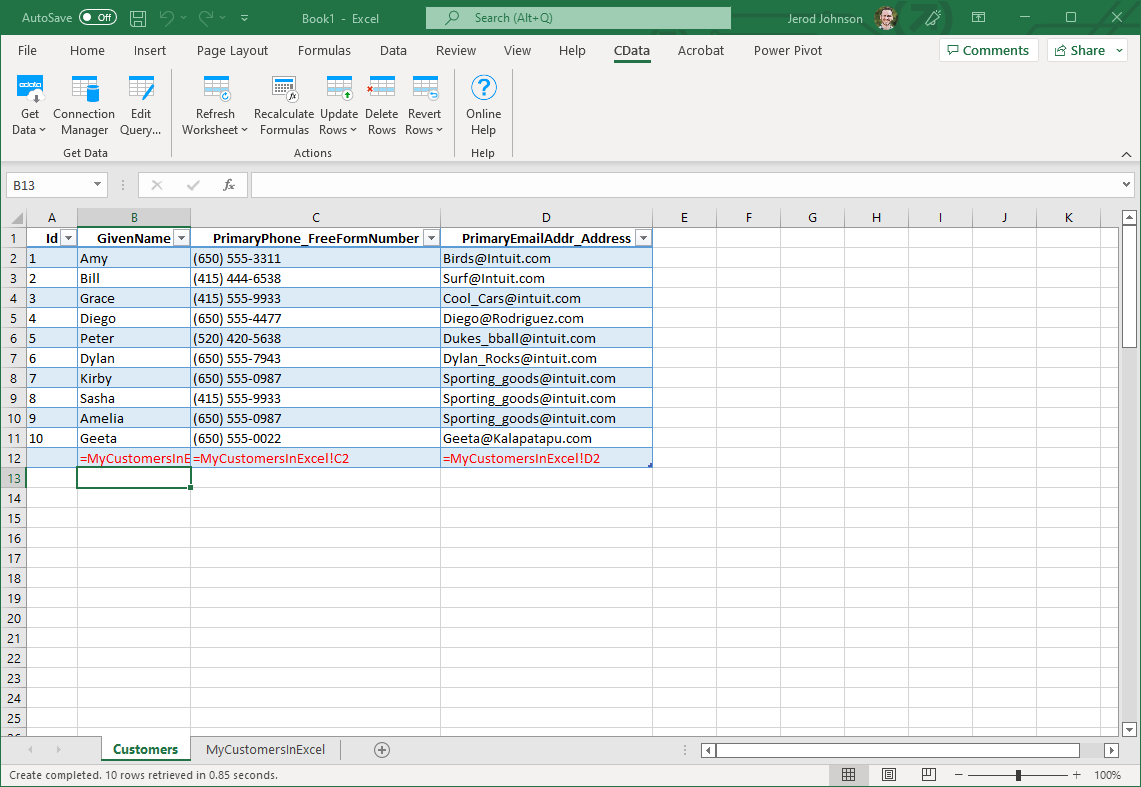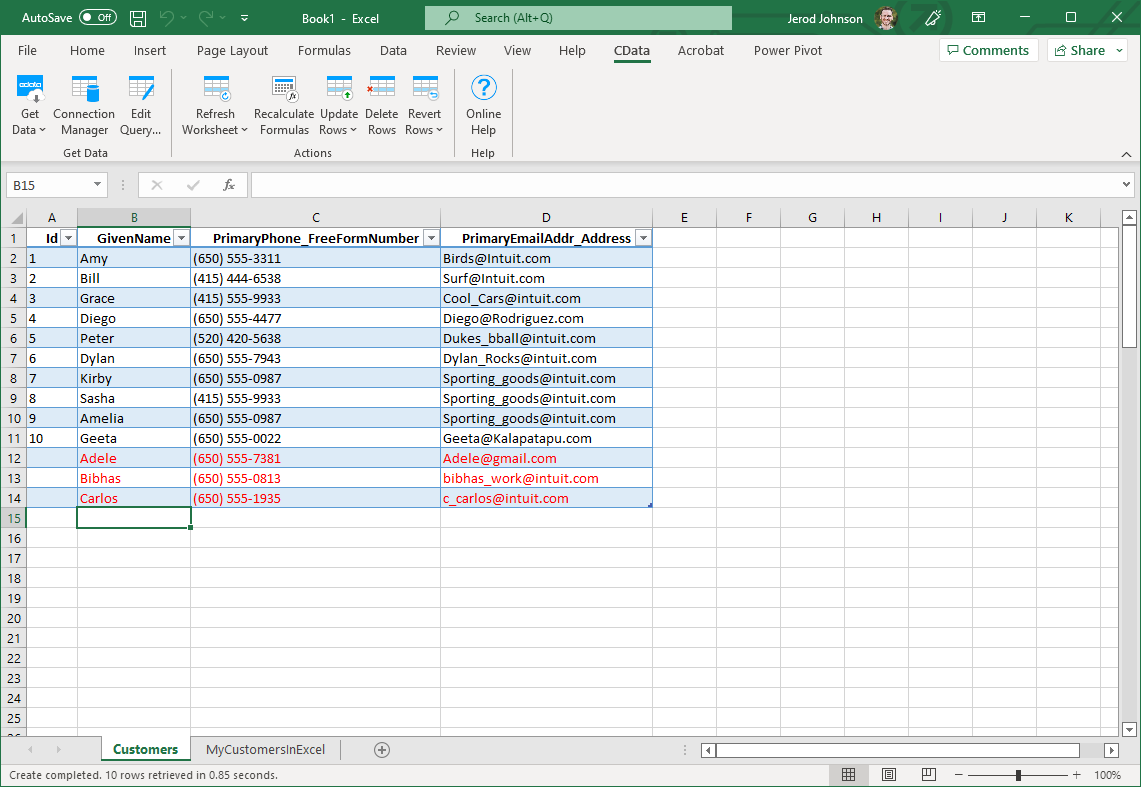Discover how a bimodal integration strategy can address the major data management challenges facing your organization today.
Get the Report →How to update LDAP from Excel
This article explains how to transfer data from Excel to LDAP using the Excel Add-In for LDAP.
The CData Excel Add-In for LDAP enables you to edit and save LDAP objects directly from Excel. This article explains how to transfer data from Excel to LDAP. This technique is useful if you want to work on LDAP objects in Excel and update changes, or if you have a whole spreadsheet you want to import into LDAP. In this example, you will use the User table; however, the same process will work for any table that can be retrieved by the CData Excel Add-In.
Establish a Connection
If you have not already done so, create a new LDAP connection by clicking From LDAP on the ribbon.
To establish a connection, the following properties under the Authentication section must be provided:
- Valid User and Password credentials (e.g., Domain\BobF or cn=Bob F,ou=Employees,dc=Domain).
- Server information, including the IP or host name of the Server, as well as the Port.
BaseDN: This will limit the scope of LDAP searches to the height of the distinguished name provided.
Note: Specifying a narrow BaseDN may greatly increase performance; for example, cn=users,dc=domain will only return results contained within cn=users and its children.
Retrieve Data from LDAP
To insert data into LDAP, you will first need to retrieve data from the LDAP table you want to add to. This links the Excel spreadsheet to the LDAP table selected: After you retrieve data, any changes you make to the data are highlighted in red.
- Click the From LDAP button on the CData ribbon. The Data Selection wizard is displayed.
- In the Table or View menu, select the User table.
- In the Maximum Rows menu, select the number of rows you want to retrieve. If you want to insert rows, you need to retrieve only one row. The Query box will then display the SQL query that corresponds to your request.
- In the Sheet Name box, enter the name for the sheet that will be populated. By default the add-in will create a new sheet with the name of the table.
Insert Rows to LDAP
After retrieving data, you can add data from an existing spreadsheet in Excel.
- In a cell after the last row, enter a formula referencing the corresponding cell from the other spreadsheet; for example, =MyUserSheetInExcel!A1.
![A local copy of a table. One row will be inserted. (QuickBooks is shown.)]()
- After using a formula to reference the cells you want to add to LDAP, select the cells that you are inserting data into and drag the formula down as far as needed. The referenced values you want to add will be displayed on
the User sheet.
![The range of changes to update. (QuickBooks is shown.)]()
- Highlight the rows you want to insert and click the Update Rows button.
As each row is inserted, the Id value will appear in the Id column and the row's text will change to black, indicating that the record has been inserted.









